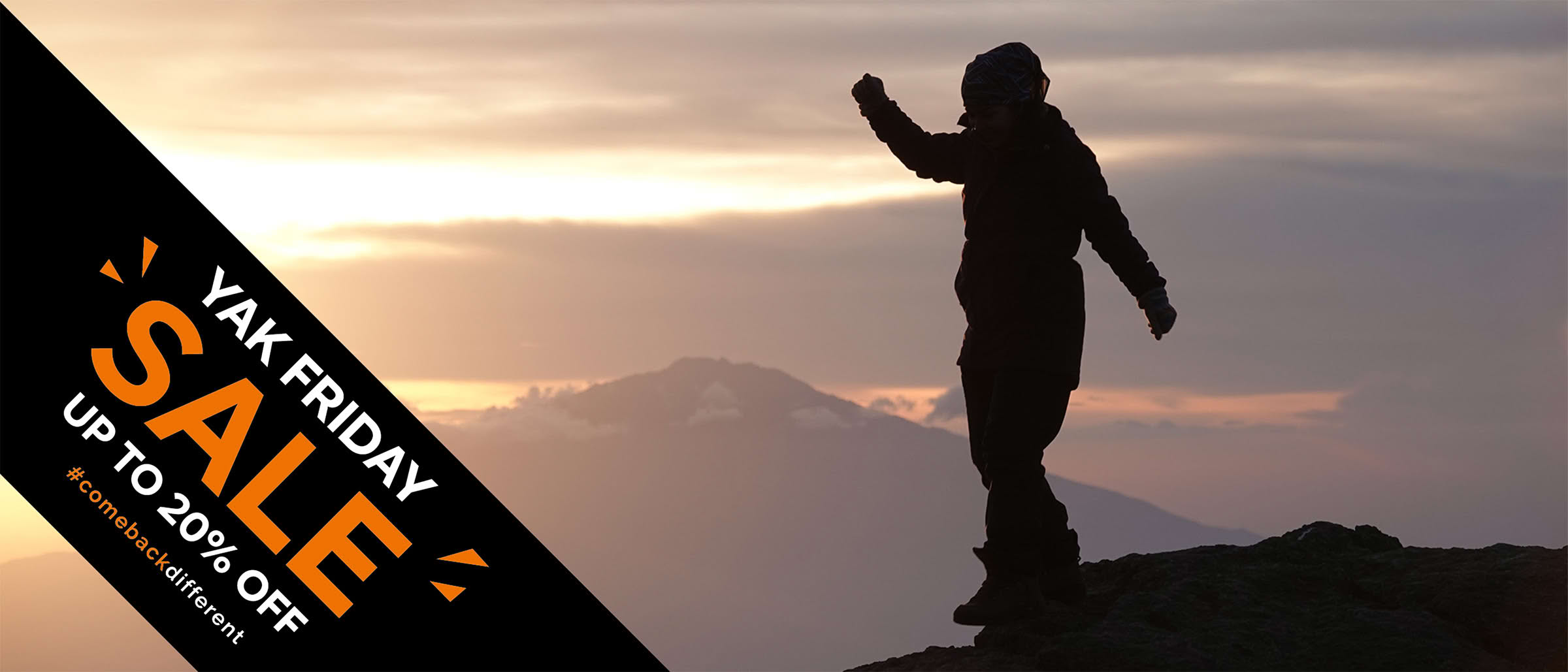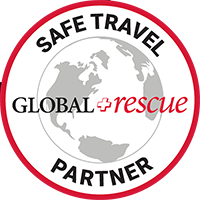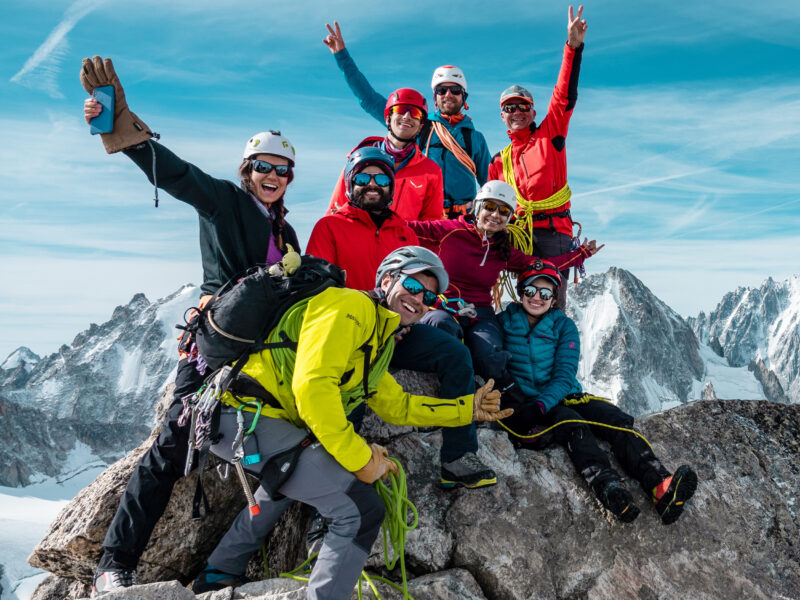BY Rami Rasamny | March 28 2025
The Complete Guide to Climbing Mont Blanc
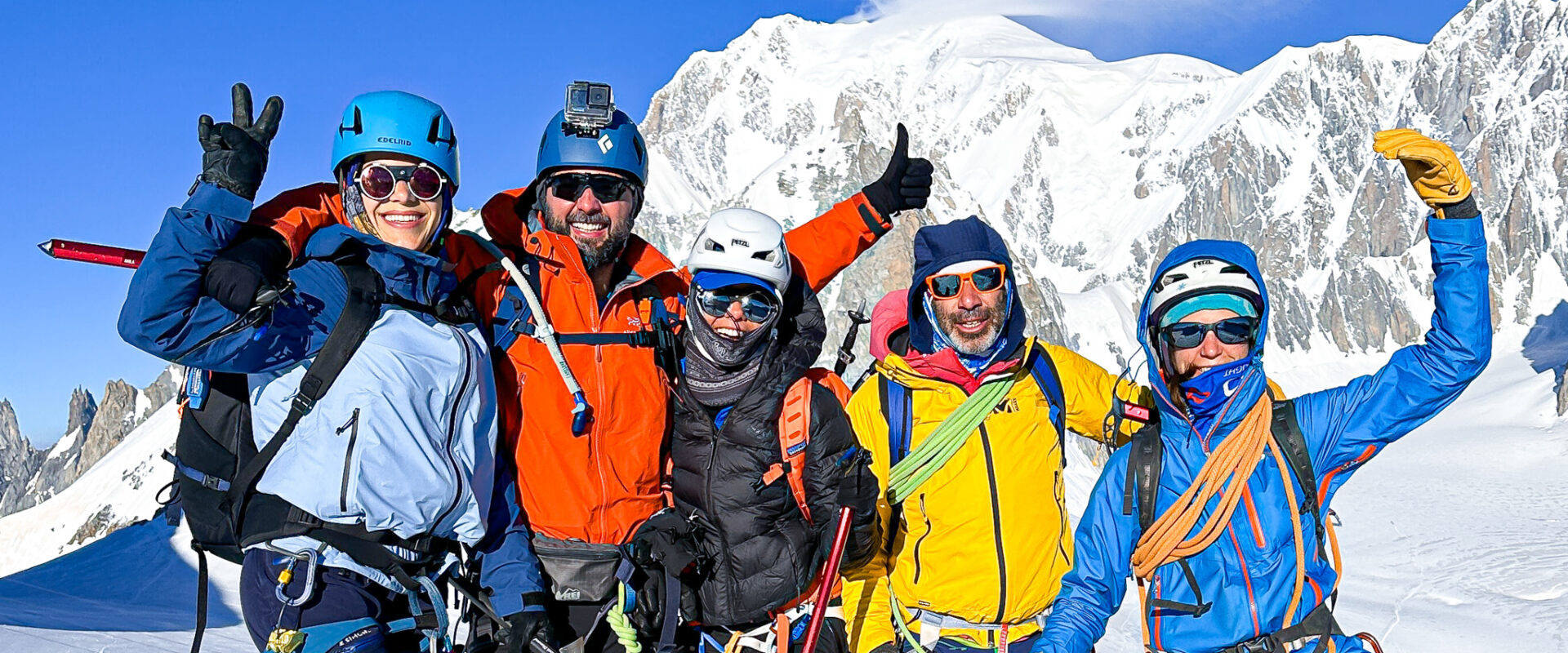
Climbing Mont Blanc is a dream for many and for good reason. At 4810 meters, it is the highest mountain in Western Europe and one of the most iconic alpine ascents in the world. Its proximity to Chamonix makes it feel accessible, but do not let its postcard presence fool you. A Mont Blanc climb is a serious and technical mountain challenge that demands preparation, patience, and the right approach.
This complete Mont Blanc guide is designed to walk you through everything you need to know to make your Mont Blanc summit a safe, rewarding, and unforgettable experience. Whether you’re just beginning to research how to climb Mont Blanc or you’re finalising your plans, this guide will help you show up prepared.
Why Climb Mont Blanc?
To climb Mont Blanc is more than just ticking off a bucket list. It is a gateway into the world of high altitude alpine mountaineering. Climbing Mont Blanc introduces you to glacier travel, mixed terrain, rope work, and the rhythm of moving through the mountains as a team. It is also an opportunity for deep personal growth. You come back from the top of Mont Blanc not just with a summit but with a new relationship to the outdoors and to yourself.
It is also regarded by some as one of the Seven Summits of Europe, and while it is not part of the official global Seven Summits list, its significance in European mountaineering makes it a symbolic and sought-after goal.
On a Life Happens Outdoors trip, your experience is designed to be transformative, not transactional. You are supported every step of the way physically, emotionally, and logistically to make sure your time in the mountains leaves a lasting impact.
Is Mont Blanc Right for Me?
You do not need to be a professional athlete or seasoned climber to attempt the Mont Blanc summit, but you do need to come prepared. This climb suits people who have:
- A strong base of fitness and cardio endurance
- Some experience hiking or trekking in mountainous terrain
- A willingness to learn and operate as part of a rope team
- An open and adaptable mindset
If you are new to alpine climbing, choosing a guided trip like the Mont Blanc Summit Course with Life Happens Outdoors gives you the structure, guidance, and safety to take it on for the first time.
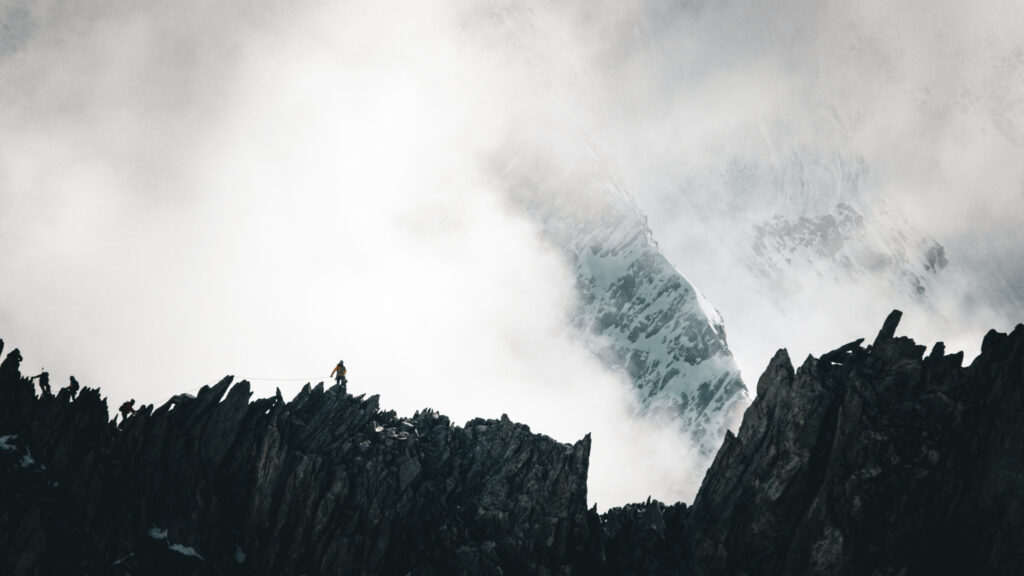
When is the Best Time to Climb Mont Blanc?
The typical Mont Blanc climbing season runs from mid June to mid September, but the best time to climb Mont Blanc is usually late June, July, and early September. These months offer the most stable conditions, with established snow bridges across crevasses and operational mountain huts.
Avoid August. In recent years, recurring heatwaves have destabilised the route and significantly increased objective hazards like rockfall and collapsing snow bridges. In some cases, the local authorities have even closed the high mountain huts to discourage a Mont Blanc climb.
Life Happens Outdoors does not offer trips in August, as the risk of hut closures and unstable conditions has become too high to responsibly run expeditions during that time.
What Route Should I Take?
There are several routes to the Mont Blanc summit, but the three most commonly used are:
1. The Gouter Route (Normal Route)
- The most popular and accessible
- Involves a stay at Tete Rousse or Gouter Hut
- Crosses the Grand Couloir, which can be hazardous in warm conditions
- Technical but manageable with good guidance
2. The Three Monts Route
- More physically and technically demanding
- Traverses Mont Blanc du Tacul and Mont Maudit
- Requires excellent weather and fitness
- Stunning and rewarding, but riskier in poor conditions
3. The Italian Normal Route (Via Gonella Hut)
- Less crowded and more remote
- Approached from the Italian side of the massif
- Involves a longer approach but avoids the Grand Couloir
- Ideal for climbers seeking a quieter experience
There are also other routes such as the technical south face climbs and the Royal Traverse, but these are beyond the remit of this Mont Blanc guide.
On Life Happens Outdoors trips, the route is selected based on conditions, team ability, and safety and we handle all the logistics, training, and bookings required to give you the best possible experience on whichever route is used.
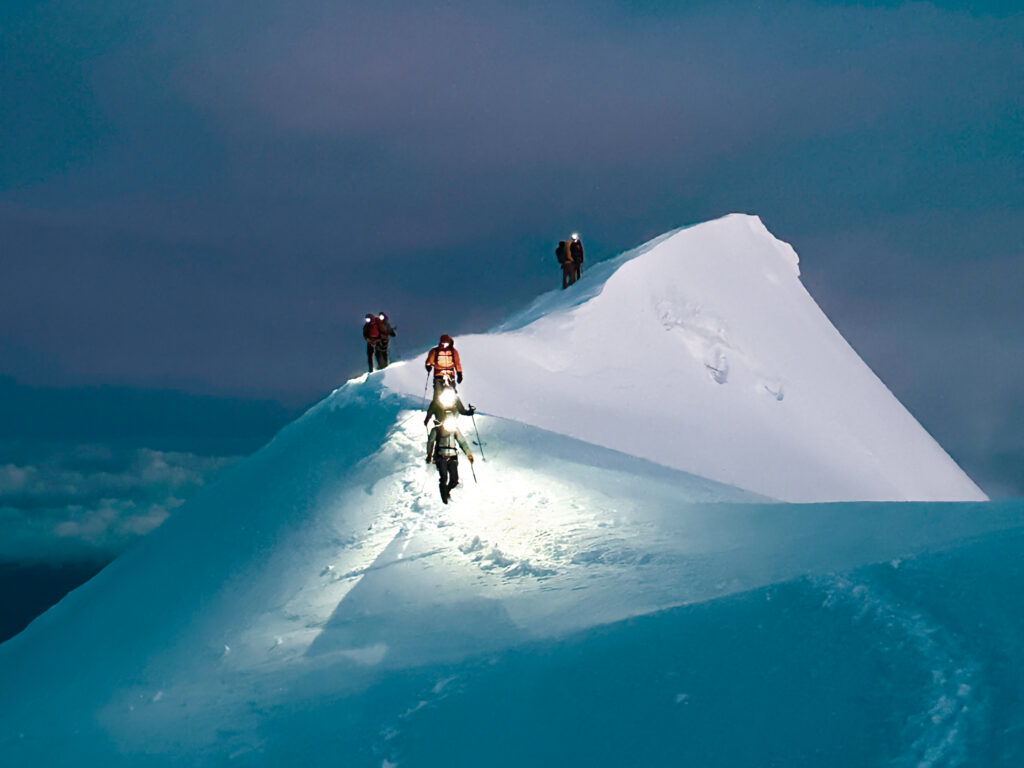
How to Train for Mont Blanc
Training to climb Mont Blanc is all about cardio endurance, leg strength, and stamina under load. You will be moving for 8 to 12 hours on summit day with a backpack at altitude. Your training should include:
- Regular uphill hiking with a weighted pack
- Long duration cardio sessions (cycling, running, or stair climbing)
- Strength training focused on legs and core
- Balance and agility work for varied terrain
Familiarity with ropes and gear also helps a lot. Even though there is no rock climbing on Mont Blanc, we have found that people who come from a rock climbing background even indoor gym climbing are generally more comfortable with harnesses, carabiners, and rope systems, and they tend to perform better overall.
Life Happens Outdoors provides a home training guide that you can integrate into your own program, helping you build the physical and technical readiness needed for a successful Mont Blanc climb.
What to Pack
Packing light and smart is essential. Every item should have a purpose and should support your movement and comfort on the mountain. Your clothing layers should be removable and lightweight. Ski pants, for instance, are not optimal. Instead, aim for a base layer, mountaineering pants, and a hard shell that you can easily adapt as conditions change.
On a Life Happens Outdoors trip, you will receive a detailed and personalised packing list. Your expedition coordinator and guides will check in with you before and during the trip to ensure you have exactly what you need based on current conditions.
Food and Water Tips
You need quick access snacks like energy bars, dried fruit, or sweets that you can eat on the go. A small sandwich or chocolate bar works well for longer breaks. Stick to what your body knows if you have not trained with energy gels, do not try them for the first time at altitude. The last thing you want on summit day is a digestive issue.
Water is equally important. After the Gouter Hut, there are no refill stations, and carrying excess water adds weight. Sip steadily and reserve enough for the descent.
Life Happens Outdoors expeditions include hut meals, water, and mountain snacks by default. You will also be able to choose meal options in advance at the huts so you can avoid carrying unnecessary food with you.
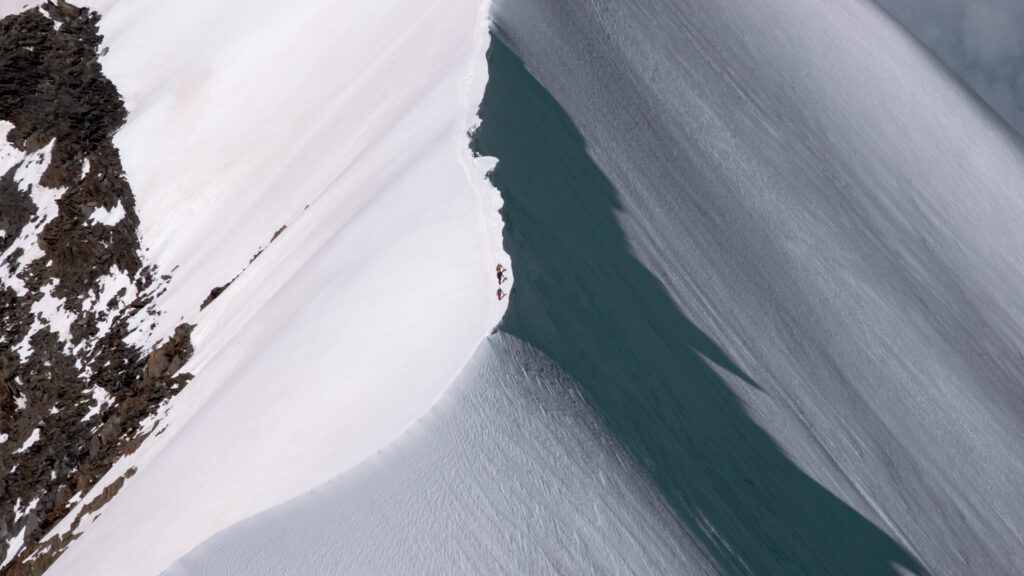
Do I Need to Acclimatise?
Yes. Acclimatisation is not optional. Mont Blanc sits at 4810 meters, and altitude sickness is one of the most common reasons people fail to reach the top of Mont Blanc.
At Life Happens Outdoors, we use the Torino Hut during the training portion of the trip. It is the highest hut in the region that is directly accessible by cable car, allowing us to sleep and train at high altitude for two nights. This gives your body the adaptation time it needs to perform safely and effectively on summit day.
Booking Huts and Guides
On the Gouter Route, you are required by local regulation to have a hut booking to be permitted to climb. These huts often fill up months in advance. Life Happens Outdoors handles all hut bookings, including alternative hut plans in case Mont Blanc is not possible due to weather or conditions.
Why Go With a Guide?
Mont Blanc is a serious alpine climb with real risks. A guide does more than lead the way. They make real time safety decisions, manage the rope team, and adapt the plan when conditions change.
At Life Happens Outdoors, you do not just get a guide. You get an expedition coordinator who manages equipment rentals, books valley dinners, assists guides when needed, coordinates alternative routes, and handles expedition photography all included as part of the standard Mont Blanc climbing experience.
Final Thoughts
Climbing Mont Blanc is a powerful experience. It is not just about standing on the top of Mont Blanc. It is about stepping into the alpine world, learning to move in rhythm with the environment, and coming back changed.
With the right preparation, the right mindset, and the right team around you, this climb becomes more than a summit. It becomes a moment of transformation.
If you are ready to climb Mont Blanc with a team that believes in the power of adventure to change lives, explore the Mont Blanc Summit Course with Life Happens Outdoors and start your journey today.
About The Author
Rami Rasamny is the founder of Life Happens Outdoors, a premium adventure travel community dedicated to transforming lives through curated outdoor experiences. A mountaineer and entrepreneur, Rami has led teams on some of the world’s most challenging peaks, from the Alps to the Himalayas. His mission is to make adventure accessible, transformative, and safe for all who seek to push their limits and Come Back Different.
About Life Happens Outdoors
At Life Happens Outdoors, we believe in the power of nature to transform lives. As proud members of the Adventure Travel Trade Association (ATTA) and the World Travel & Tourism Council (WTTC), our team of certified guides and outdoor professionals is committed to the highest standards of safety, sustainability, and excellence.
Discover more about our story and mission on our Meet LHO page, or explore our curated adventures such as the Tour du Mont Blanc Trek, the Climb of Kilimanjaro, and Chasing the Northern Lights.









